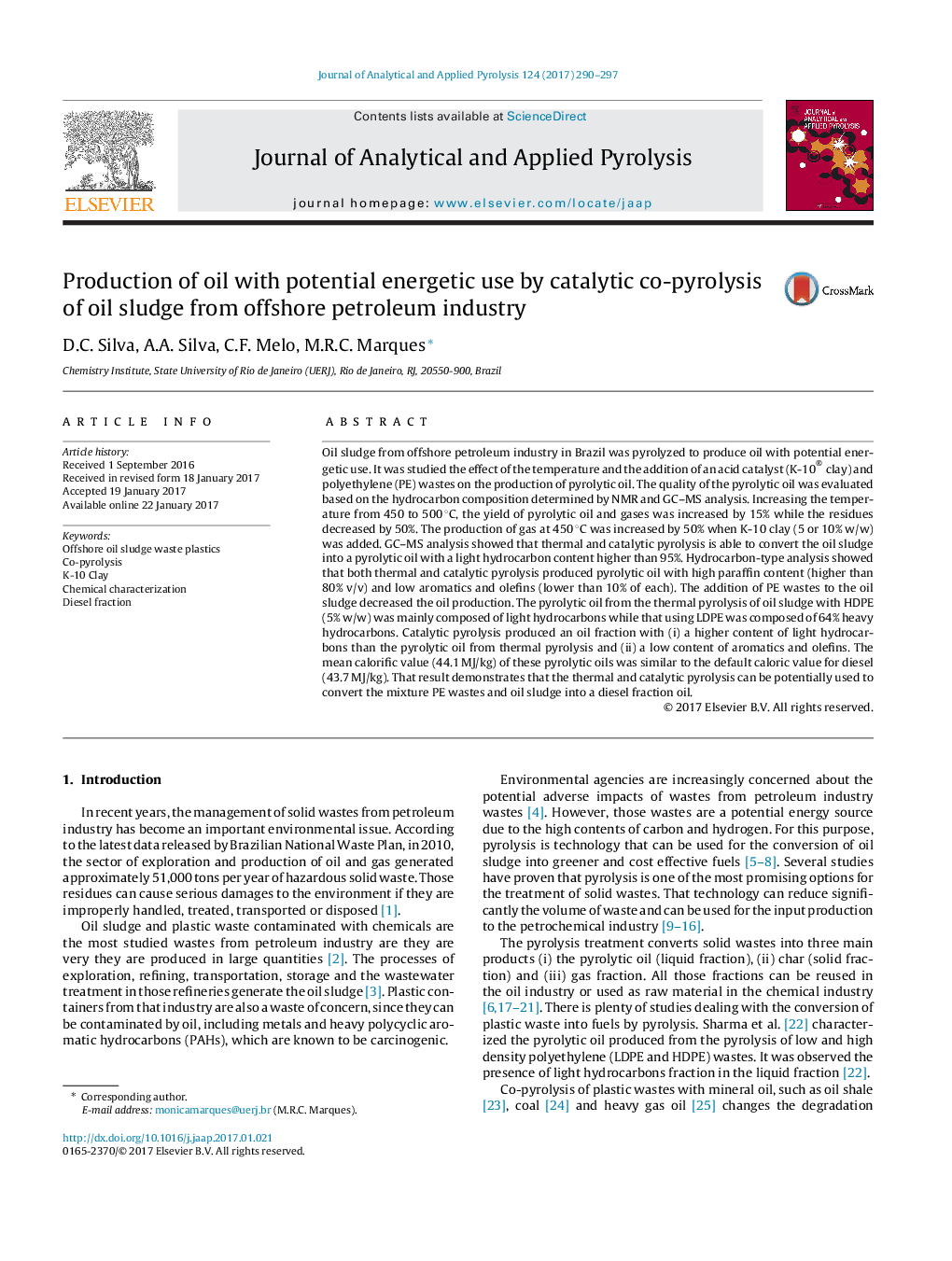| Article ID | Journal | Published Year | Pages | File Type |
|---|---|---|---|---|
| 5134595 | Journal of Analytical and Applied Pyrolysis | 2017 | 8 Pages |
â¢Oil with potential energetic use was produced of catalytic co-pyrolyis of oil sludge from offshore petroleum industry.â¢High amount of diesel fraction oil was obtained from co-pyrolyis of oil sludge from offshore petroleum industry in presence of K-10.â¢Acid clay K-10 favors the generation of paraffinic pyrolysis oil.
Oil sludge from offshore petroleum industry in Brazil was pyrolyzed to produce oil with potential energetic use. It was studied the effect of the temperature and the addition of an acid catalyst (K-10® clay) and polyethylene (PE) wastes on the production of pyrolytic oil. The quality of the pyrolytic oil was evaluated based on the hydrocarbon composition determined by NMR and GC-MS analysis. Increasing the temperature from 450 to 500 °C, the yield of pyrolytic oil and gases was increased by 15% while the residues decreased by 50%. The production of gas at 450 °C was increased by 50% when K-10 clay (5 or 10% w/w) was added. GC-MS analysis showed that thermal and catalytic pyrolysis is able to convert the oil sludge into a pyrolytic oil with a light hydrocarbon content higher than 95%. Hydrocarbon-type analysis showed that both thermal and catalytic pyrolysis produced pyrolytic oil with high paraffin content (higher than 80% v/v) and low aromatics and olefins (lower than 10% of each). The addition of PE wastes to the oil sludge decreased the oil production. The pyrolytic oil from the thermal pyrolysis of oil sludge with HDPE (5% w/w) was mainly composed of light hydrocarbons while that using LDPE was composed of 64% heavy hydrocarbons. Catalytic pyrolysis produced an oil fraction with (i) a higher content of light hydrocarbons than the pyrolytic oil from thermal pyrolysis and (ii) a low content of aromatics and olefins. The mean calorific value (44.1 MJ/kg) of these pyrolytic oils was similar to the default caloric value for diesel (43.7 MJ/kg). That result demonstrates that the thermal and catalytic pyrolysis can be potentially used to convert the mixture PE wastes and oil sludge into a diesel fraction oil.
